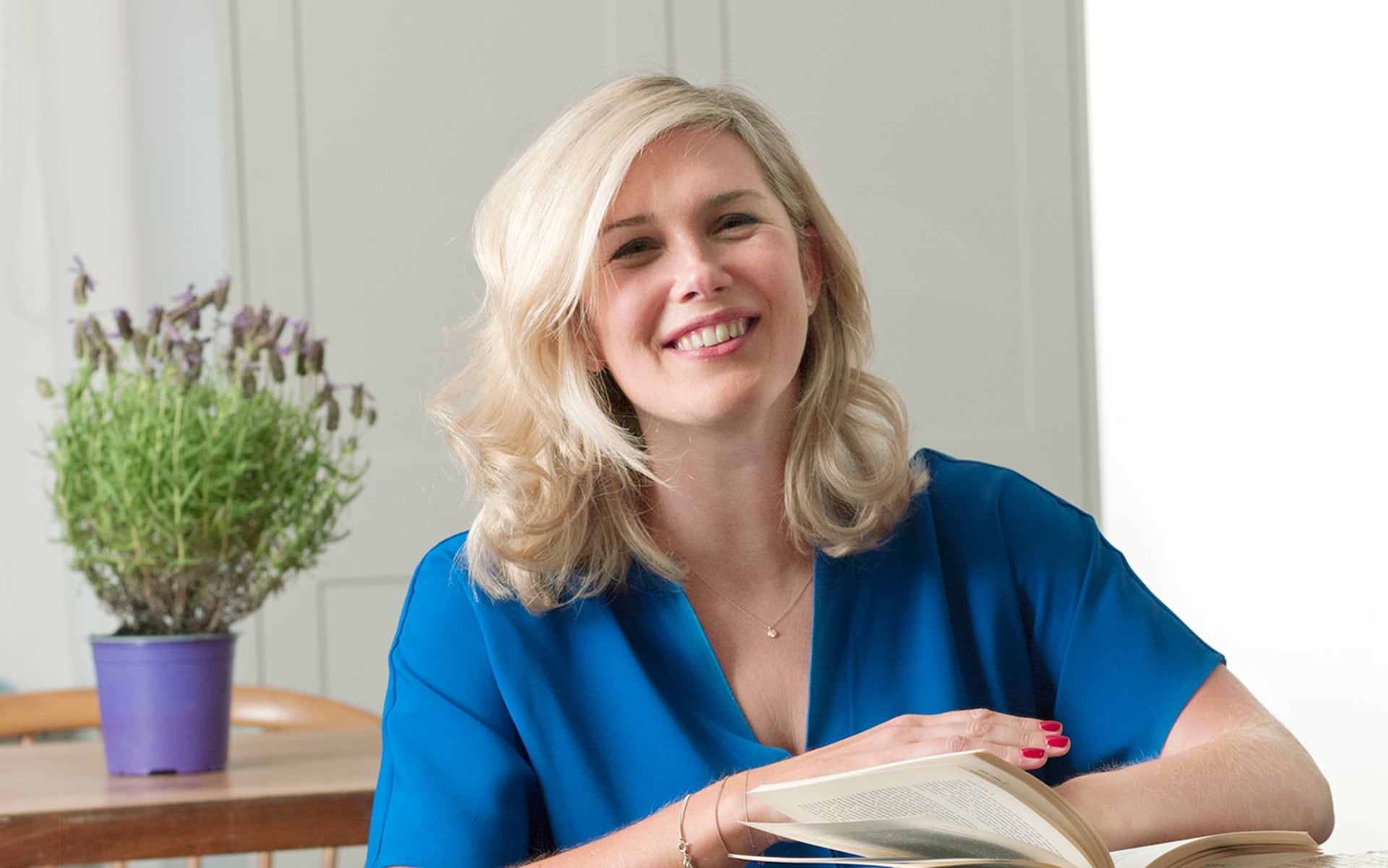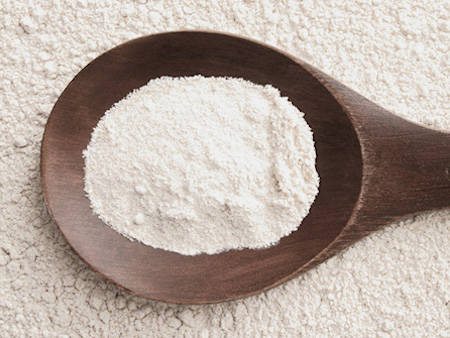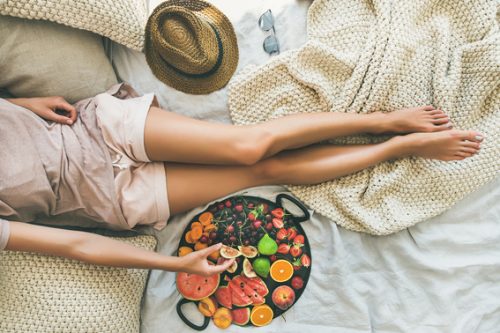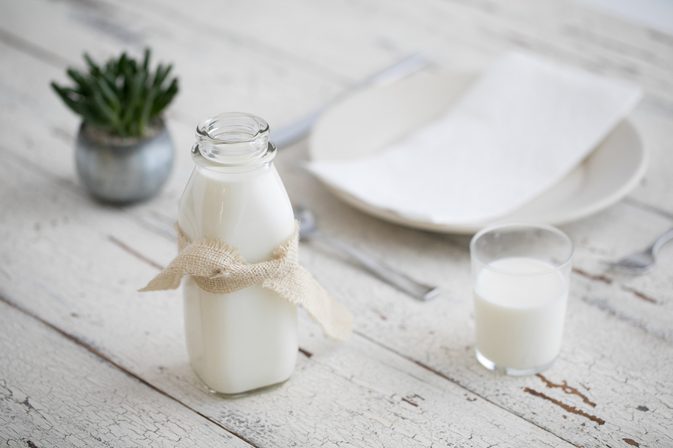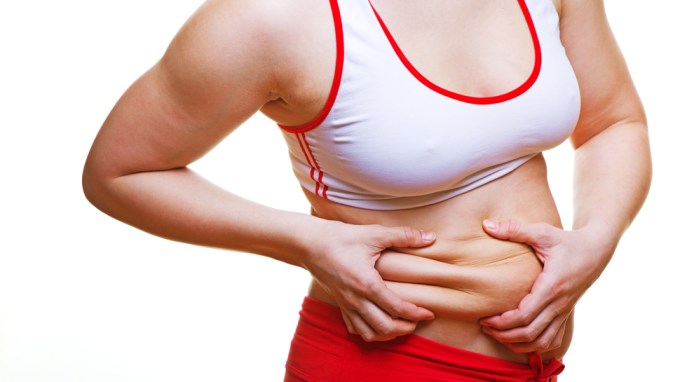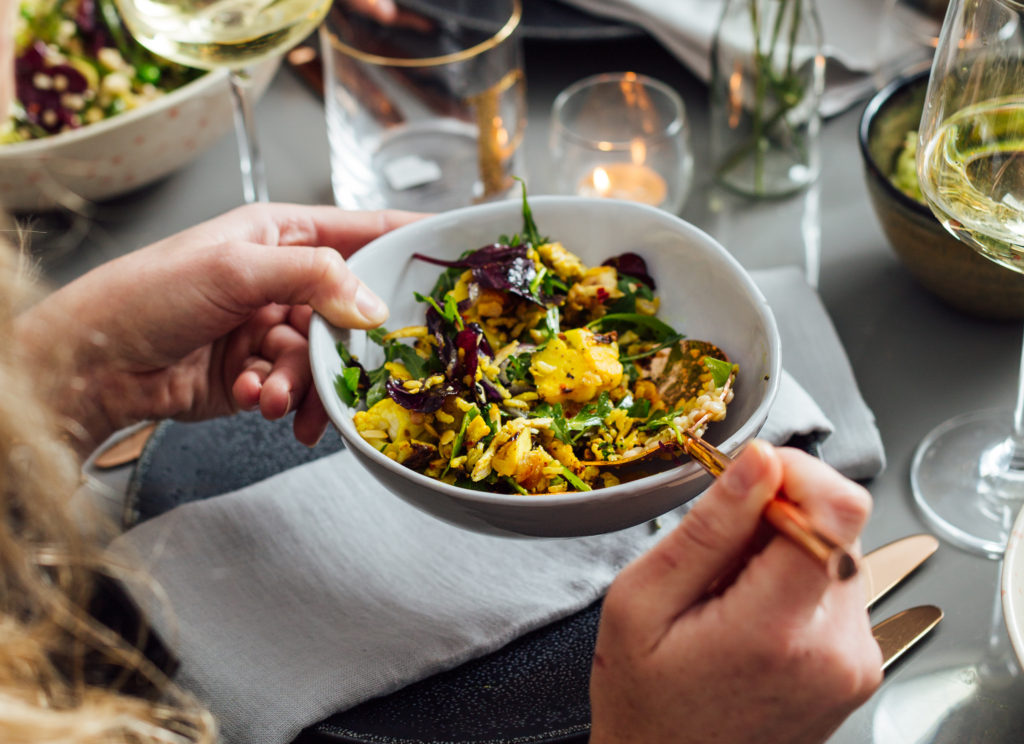ed up of trying diets that just don’t work for you? Wish there was a diet that fitted your body type perfectly?
Finding the right diet is hard. Don’t get us wrong, there are many out there, but few – if any, it seems – are right for all of us.
The 7 day 2000 calorie diet meal plan is the ideal way for most women to kick their weight loss program into gear. It’s agreed on by dieticians and health experts that the average woman needs around 1600-2000 calories to maintain her weight. Of course, the exact amount she needs is dependent on a few variables, including her weight and height, as well as her level of activity.
However, if you lead a mostly sedentary lifestyle, and you eat more calories than you actually need, you can put too much weight on that puts you at risk of diabetes, obesity and more.
The 7 day 2000 calorie diet adds six tasty and wholesome meals to your diet, and combines it with moderate exercise so that you start to lose weight.
The best thing? You probably won’t even realise that you’re on a diet!
How’s this so? Let’s take a closer look at what it’s all about in this bumper article that includes an easy to implement meal plan.
2000 Calories a Day Sounds Like a Normal Amount. Can I Eat That Much and Lose Weight?

We’ll go into lots of detail about the seven day 2000 calorie diet throughout this article, but the main question you might be wrestling with right now is how it’s possible to consume 2000 calories a day and lose weight.
After all, the average human body needs 2000 calories per day to survive. But one of the aims of this diet is to get you to restrict your calorie intake to 2000 calories per day … and then gradually lower it.
“8,700 kilojoules has been defined as the average daily energy requirement for Australian adults. Obviously this is just an estimate as, for example, taller people, men and people who do more activity have greater needs than others,” Jemma O’Hanlon told Huffington Post Australia.
“It’s like body mass index being an estimate of how healthy your weight is. It’s only an estimate and it not meant to be applied to the individual person. The actual number of kilojoules you require will vary depending on your age, gender, life stage (if you’re growing or are pregnant as this requires more energy), weight, height, disease state, how physically active you are and what type of activity you engage in.”
See, 2000 calories per day doesn’t mean that your body needs exactly that amount. Many of us will consume more than that each day, and because you’re reading this article, we’re going to assume that you do, too.
To determine exactly how many calories you need each day to get by and feel good, you first need to determine your basal metabolic rate (BMR).
To do this if you’re a woman, you need to use the following formula:
655 + (4.35 x weight in pounds) + (4.7 x height in inches) – (4.7 x age in years)
If you’re man, use this formula instead:
66 + (6.23 x weight in pounds) + (12.7 x height in inches) – (6.8 x age in years)
Once you’ve calculated your BMR, you then know how many calories your body needs each day. Those who lead an active lifestyle will need to consume more calories than those who lead a sedentary lifestyle.
For example, if you exercise a few times a week, work out your BMR by 1.375 for your daily caloric requirement. If you work out a lot, multiply it by 1.725.
But Hey … What About Burning Calories? Does That Count With This Diet, Too?
 PIN IT
PIN ITThe seven day 2000 calorie diet sounds like it’s focused on what you eat – and it is.
As you know that losing weight isn’t just about counting the calories you eat – it’s also about counting the calories you burn.
That said, when people aren’t on a strict 2000 calories per day diet, they’re less careful about what they eat and therefore have to burn more calories to make up for the excess calories they’ve eaten.
When you adopt the 2000 calories per day, however, you will still need to exercise. We’ll cover more about this later in the article.
Do you Already Eat 2,000 Calories Per Day?

Most of us don’t actually know how many calories we’re eating each day. Even health conscious people who are otherwise smart about their diet probably don’t know how many calories they’re getting through.
If you don’t consider yourself to be a big eater, it’s likely that you’re eating 1,500 calories a day, or less.
However, if you’re reading this article, it’s more than likely that you’re currently eating more than 2,000 calories a day.
Daily Values Explained

As you get more into dieting, you’ll come across terms like “daily values”. These are the nutrient intake recommendations given to us by our national health experts. If you take a look at the bottom of food labels, you might notice a list of daily values (we say might because not all foods have this information).
Values are listed for both a 2,500 and a 2,000 calorie diet.
If you’re to get through 2000 calories a day, you should eat:
- 25 mg of dietary fibre
- Less than 300mg of cholesterol
- Less than 2400 mg of sodium
- 50g of protein (or 200 calories)
- 300g of carbs (or 1200 calories)
- Less than 20g of saturated fat (or 180 calories)
- Less than 65g of fat (or 585 calories)
Many of these recommendations are based on the latest science and are used to work out the % daily value.
That said, some recommendations haven’t changed. For example, those for cholesterol and saturated fat are the same. The following have been updated according to the latest science and findings:
- 4700 mg of potassium
- 18mg of iron
- 1300 mg of calcium
- 20 micrograms of vitamin D
- 28g of fibre (at least)
- 50g of sugar at the most
- 275g of carbs (or 1100 calories)
- 2300mg of sodium at the most
- 78g of total fat (or 700 calories) at the most
Of course, following these rather strict limits will be tough for anyone, but our 7 day meal plan later in the article is intended to do all the counting for you.
Moreover, these are recommendations only that don’t need to be followed to the absolute letter.
Percent Daily Value

Alongside daily value is percent daily value. This tells you how much a specific piece of food is contributing to your total recommended intake of any nutrient. For example, how much a banana contributes to your total recommended daily intake of potassium.
Percent daily values are useful because they let you know how much you are getting each day of the key nutrient such as fibre, calcium, protein and fat. The data also lets you know when you’ve had too much cholesterol or saturated fat for the day, too.
On the left side of a food products label, you’ll see the number of grams or milligrams that a particular food provides in a single serving. On the right side, you’ll see the percent which lets you know how much of your daily recommend amount of a particular nutrient you’ll consume if you’re on a 2000 calorie a day diet.
For example, if you’re eating 2000 calories per day, it’s recommended that you consume no more than 20g of saturated fat each day. Let’s imagine that your preferred snack contains 2g of saturated fat. If you eat it while on a 2000 calories per day diet, that snack delivers 10% of the recommended daily amount of saturated fat.
On the whole, if you go on a seven day 2000 calorie diet, using the percent daily value is a good idea that can help you make better judgements about what to eat and what not to eat.
Does It Matter Where We Get Our Calories From?

It does.
If you’re consuming 2000 calories per day, what matters is the numbers as well as the quality of the calories you’re consuming.
We might like to believe that the calories in a pizza are the same as the ones in a healthy stir fry, but they’re not.
There’s no getting around the fact that junk food is just that – junk. It might have the same amount of calories as a healthy stir fry but they’re not the calories you need to be eating. Calories from nutritionally-poor foods will have a detrimental impact on your body.
Not all calories are created equal. Person A could get the same amount from a few pieces of fruit as Person B can get from a slice of pizza, but the quality is different.
As dietician Robbie Clark put it:
“This may be true when they’re on the plate since all ‘calories’ have the same amount of energy. However, the calories on paper are not necessarily the calories we actually receive due to the human body being a highly complex biochemical system with elaborate processes that regulate energy balance.”
What Is The Seven Day 2000 Calorie Diet?

Are you the type of person who goes shopping and checks the labels? If so, you might have noticed one called the Nutrition Facts Label. This is “based on a 2000 calorie diet” and you’ll find it on the food.
The FDA uses this as a standard so that the consumer understands what percentage of each nutrient is represented in a particular food. Depending on the variables we mentioned above – age, height, weight and level of activity, you’ll either need to consume more or less.
However, for the purpose of the seven day 2000 calorie diet – and thus the purpose of this article – we’re going to restrict ourselves to 2000 calories.
Consider 2000 calories as a starting point of sorts for your weight loss goals. Stick to this diet for seven days and then adjust accordingly afterwards (for example, adopt a plan with even fewer calories). The aim is to move from a 2000 calorie diet to a 1500 calorie diet – and then to a 1200 calorie diet.
It’s impossible to just throw yourself into a 1200 calorie diet, which is why starting with 2000 calories is the best thing to do. Remember that, while you need to cut calories from your diet to lose weight, calories are a measure of energy. Cutting too many can be dangerous and lead to health complications.
Going slowly down to 1200 calories per day is a good goal to aim for, but going down to 800 isn’t recommended. So few calories will put your body into starvation mode. Once your body thinks you’re starving, it’s not going to burn fat anymore. Instead, it will conserve both energy and calories and you will plateau.
But before we get right into things, let’s take a look at why you would need to go on the seven day 2000 calorie diet:
Who Is The Seven Day 2000 Calorie Diet For?

If you want to lose weight and you fall into one of these categories, you might want to consider this diet:
- A teenager who is overweight and struggles to be active
- A person in their mid-twenties who is of average height and who either has a desk job or who otherwise leads a very sedentary lifestyle
- A person who is in their mid-thirties who is inactive, unfit and overweight
- A person who is in their mid-fifties who is slightly overweight, and who is of average height
- A person who is in their mid-sixties who is moderately active and who is of average height
- A person who is of average height and weight, who is fairly active but who wants to tone up a bit
What To Do Before You Start The Diet

Before you start a seven day 2000 calorie diet off the basis of this article, you first need to talk to your doctor or a dietician. They can tell you if your body will be able to handle a 2000 calorie diet.
It’s also important that you check your body composition and weight first to find out your lean mass and body fat percentages.
As well as those key things, it’s a good idea to write down your goals and expectations for this seven day diet. What do you want to achieve?
Perhaps take before and after photos for comparison, too.
The Seven Day 2000 Calorie Diet Meal Plan
Day 1

Start at 6/6.30am with two tsp of fenugreek seeds. Make sure to soak these over night in a cup of water. Calories? 24.
Then it’s time for breakfast at 7/7.30am. For breakfast, eat a single banana with two boiled eggs. Enjoy them with two slices of bread and wash down with a cup of green tea. Calories? 414.
At mid morning (10/10.30am), you can eat again – but not much! Try a glass of fresh juice with six almonds. Calories? 215.
Then it’s time for lunch (yay!) at 12/12.30pm. This should consist of 4 ounces of chicken breast (preferably grilled) with carrots, asparagus, bell peppers and broccoli. Add 2 tsp of olive oil and a pinch of lime juice. If you like mustard, add some dijon mustard, too. At the side, include 2 tsp of yogurt and 2 tsp of cheddar cheese, as well as four raisins. Calories? 390.
Next, you can have a post-lunch snack at 3/3.30pm. This should be a small bowl of grapes washed down with a glass of coconut water. Calorie? 251.
Dinner will be your last meal of the day today at 6.30/7pm. This will be three ounces of fish (pan fried) with two cloves of garlic, some baby spinach and cherry tomatoes.
Before bed, snack on a tsp of low-fat cheese and wash it down with a glass of warm milk.
Then, rest.
As it’s day one, you should be feeling good all day. We always feel good when we start a new diet, so as you go to bed, you’ll probably be pleased with the way things have gone.
The problem is that, it’s also tempting to want to return to a few old habits as it’s still so soon into a new diet. This is fine. If you feel like having a bit of chocolate, go ahead and have a little bit.
To take your mind off old cravings, do something to take your mind off things. Sleep well and get yourself ready for Day 2.
Day 2

Start at 6/6.30am with a cup of water. Add a pinch of apple cider vinegar. Calories? Just the one this time!
Then it’s time for breakfast at 7/7.30am. For breakfast, enjoy a bowl of oatmeal milk topped off with eight almonds, a scattering of sunflower seeds, two dates, and mix of strawberries and blueberries. Wash it all down with a cup of green tea. Calories? A hefty 458.
At mid morning (10/10.30am), you can enjoy a nice, light snack. Today this will be a carrot and cucumber that you combine with a cool glass of lime juice. To make the snack tastier, prepare a bowl of hummus at the side. Calories? 490.
Then it’s time for lunch (yay!) at 12/12.30pm. This should consist of ground turkey cakes combined with bell peppers, carrots, zucchini, and brown rise. Top it all off with a few raisins. Calories? 402.
Next, you can have a post-lunch snack at 3/3.30pm. Today, this is an apple that’s coated with 2 tbsp of peanut butter. Calories? 210.
Dinner will be your last meal of the day at 6.30/7pm. Try tofu curry with flatbread (no more than 3) and a salad bowl of cucumber and tomatoes. Calories? 488.
Before bed, bite on a single piece of dark chocolate and enjoy it with a cup of warm milk.
By the time the second day is over, you should start feeling as though you’re getting the hang of this. It’s normal to feel a bit tired, especially if your new diet is so different to your old one. But these feelings of tiredness will go away if you stick with it and exercise (which we’ll take a look at soon).
Day 3

Start at 6/6.30am with a cup of water. Enjoy it with 2 tsp of fenugreek seeds that you soaked overnight in another cup of water. Calories? 24.
Then it’s time for breakfast at 7/7.30am. For breakfast, you’re going to eat like a queen today. Day 3’s breakfast is half an avocado with two poached egg,a tsp of ground melon seeds, a tsp of sunflower seeds and a half cup of ricotta cheese. Top it all off with four almonds and season with a little salt and pepper if you wish. Calories? 414.
At mid morning (10/10.30am), you can enjoy a nice, light snack. Today this is a pear and some ricotta cheese combined with three tsp of peanut butter. Calories? 501.
Then it’s time for lunch (yay!) at 12/12.30pm. This will be a three ounce fish taco that you grill and eat with tabasco sauce and some vegetables. Drink a glass of buttermilk. Calories? 329.
Next, you can have a post-lunch snack at 3/3.30pm. Today, this is a combination of a papaya smoothie and a small cup of unsalted popcorn. Calories? 244.
Dinner will be your last meal of the day at 6.30/7pm. Try a bean curry (not too spicy) and enjoy it with a pita bread and a beetroot and carrot salad. Add a tsp of grated cheese, too. Calories? 498.
Before bed, sip on a cup of warm milk and munch on a piece of dark chocolate.
The aim by Day 3 is to lose a fair amount of water weight. If you weight yourself on the scales, you should notice this loss – and it should raise a smile!
If you’ve lost weight, it will give you the encouragement needed to keep going.
Day 4

Start at 6/6.30am with a cup of warm water. Squeeze some lime juice into the cup for extra health benefits. Calories? 5.
Then it’s time for breakfast at 7/7.30am. For breakfast today it’s oats bran, muesli, a single tsp of sunflower butter, pomegranate, melon seeds and two tbsp of full-fat yogurt. Have a cup of green tea to kick the day off in the best possible way. Calories? 435.
At mid morning (10/10.30am), you can enjoy a nice, light snack. Today it’s a glass of orange juice and four walnut halves. Calories? 188.
Then it’s time for lunch at 12/12.30pm. For day 4 it’s tofu with brow rice, cheddar cheese, scallions, shredded coconut, ginger, garlic, onions and bell peppers. Wash it all down with a glass of buttermilk. Calories? 402.
Next, you can have a post-lunch snack at 3/3.30pm. Today, this will be a cup of ricotta cheese, a pair and three tsp of peanut butter. Calories? 501.
Dinner will be your last meal of the day at 6.30/7pm. Relax with as steak and vegetables – garlic, onions, kale, broccoli and tomatoes. Calories? 469.
Go to bed with turmeric in your glass of warm milk.
If you stick day 4 out, you’ll have done very well and should be feeling amazing. Well done. Progress has been made. Sure, these are just small steps in the greater scheme of things, but it’s a fantastic start.
And those cravings for junk food? They should have all but gone by now. It’s all important that you keep avoiding alcohol.
Day 5

Start the day at 6/6.30am with 2 tsp of fenugreek seeds that have been soaked overnight in a glass of water. Calories? 24.
Then it’s time for breakfast at 7/7.30am. This time, your breakfast of champions is a slice of brown bread toast coated with peanut butter. Add a chopped banana, and 6 almonds. Drink a cup of green tea. Calories? 403.
At mid morning (10/10.30am), you can enjoy a nice, light snack. On Day 5, try a glass of homemade strawberry shake. Calories? 295.
Then it’s time for lunch at 12/12.30pm. For day 5 it’s a tuna salad with two tbsp of mayonnaise, a pinch of honey, mustard, lime juice and olive oil. Serve it with tomatoes, cucumber, sweetcorn, red cabbage and lettuce. Enjoy with a glass of buttermilk. Calories? 396.
Next, you can have a post-lunch snack at 3/3.30pm. Today, try an avocado smoothie and a small cup of popcorn. Calories? 354.
Dinner will be your last meal of the day at 6.30/7pm. Take it easy with a lentil soup accompanied by some flatbread, spinach and cauliflower. Finish off with some yogurt and a piece of dark chocolate. Calorie? 408.
After day 5 is done, you should notice that you have more energy. By now, the pattern of waking up early and going to bed at a set time should be fixed in your mind and body and you should be enjoying your new routine, rather than fighting it! Hopefully you will also feel fresher when you first wake up in the morning.
Day 6

Start the day at 6/6.30am with a glass of water. Add a pinch of lemon juice for more health benefits. Calories? 5.
Then it’s time for breakfast at 7/7.30am. Cook an omelette from three egg whites and two whole egg. Add half an avocado and six almonds to your plate and wash it all down with a relaxing cup of green tea. Calories? 495.
At mid morning (10/10.30am), you can enjoy a nice, light snack. This time it’s a small bowl of cucumber that you can flavour with honeydew melon. Calories? 124.
Then it’s time for lunch at 12/12.30pm. For day 6 it’s the turn of crab cakes! Eat them with yellow bell peppers and combine with guacamole that’s been flavoured with pepper, lime juice and olive oil. And because you’ve made it this far, you can enjoy a small brownie afterwards. Calories? 538.
Next, you can have a post-lunch snack at 3/3.30pm. Today, wash two saltine cracker down with a cup of black coffee.
Dinner will be your last meal of the day at 6.30/7pm. Fill up with a mixed vegetable curry. Eat it with some flatbread and some mushrooms. Finish off with half a plum and half a peach in a cup of yogurt.
After day 6 is over, fat in your body will literally start to melt away. By this point, not only should you be noticing a difference on the scale – you should also be noticing a difference in the mirror. Noticing that you’ve lost weight will give you the motivation to take your momentum into day 7 – the final hurdle.
Day 7

Start the day at 6/6.30am with 2 tsp of fenugreek seeds that have been soaked overnight in a glass of water. Calories? 24.
Then it’s time for breakfast at 7/7.30am. This time, you can enjoy a bowl of oatmeal topped with 2 tbs of peanut butter, a scattering of chia seeds, two dates and a handful of blueberries. Wash it down with a cup of green tea for those relaxing morning vibes. Calories? 384.
At mid morning (10/10.30am), you can enjoy a nice, light snack. On Day seven, it’s time for a glass of fresh watermelon juice. Keep yourself going with a saltine cracker, too. Calories? 592.
Then it’s time for lunch at 12/12.30pm. Today it’s the turn of salmon. Grill a three ounce piece of salmon and eat it with arugula and bean sprouts. Finish of with a pair of dried apricots and a glass of buttermilk. Calories? 433.
Next, you can have a post-lunch snack at 3/3.30pm. Today, boost your energy with ten baked apple slices coated with 2 tsp of peanut butter. Sprinkle some cinnamon over the top for extra taste and enjoyment. Calories? 380.
Dinner will be your last meal of the day at 6.30/7pm. Finish things off with a homemade bone broth and eat it with assorted vegetables. Calories? 488.
And since it’s your last day, we’ll allow you to go to bed with a brownie and a glass of milk. Add some turmeric in there too.
At the end of the seventh day, you should be feeling pretty darn amazing. Hey, you made it! Congrats (it’s why we let you have a brownie, which should stop any cravings you have from getting out of control).
By bedtime on the last day, you should be feeling accomplished. Allow yourself to feel proud. Give yourself a pat on the back – you totally deserve it!
But …
What Happens Next?
As this is the seven day 2000 calorie diet you’re probably eager to know what happens after the seven days have elapsed.
The answer? It’s entirely up to you. The diet lasts for 7 days and that’s it. What you do next is in your hands; you can return to your old diet, do this one for another 7 days, or you can even drop down to the 1500 calorie diet – which is our suggestion. If you move onto the 1500 calorie diet and combine it with a solid workout routine, you will find that the fat literally starts to fall off you.
Are There Any Other Foods I Can Eat?

There’s no need to stick absolutely rigidly to our meal plan. It’s there as a guide to help you if you don’t know what to eat and don’t want to go over (or even under) 2000 calories per day. Feel free to be creative and add and take things away from the meal plan.
Here are some foods you can eat on a 2000 calories a day diet:
- Vegetables – Pumpkin, bitter, ridge and bottle gourd, squash, banana flower, Chinese cabbage, cabbage, spinach, kale, radish, beetroot, carrot, bell peppers, broccoli, okra, eggplant
- Fruits – Grapefruit, berries, papaya, dragon fruit, passion fruit, melon and watermelon, pineapple, plum, tangerines, tomatoes, cucumbers, kiwi, lemons, oranges, plums, peaches, bananas, pears and apples
- Dairy – buttermilk, cottage cheese, ricotta cheese, low-fat frozen yogurt, full-fat yogurt and full fat milk
- Protein – Tofu, beans, lentils, mushroom, fish, chicken and turkey breast
- Oils and fats – Sunflower butter, peanut butter, ghee, rice bran oil and olive oil
- Spices and herbs – Basil, oregano, fennel, dill, rosemary, cilantro, coriander seeds, fenugreek seeds, cumin seeds, saffron, nutmeg, mace, star anise, cayenne pepper, dried red chili, garlic, ginger, clove, cardamom, cinnamon, white and black pepper
Earlier in the article, we mentioned how not all calories are created equal. While you might be able to get more calories from chicken with the skin still on it, that does’t mean you should be eating it if you want to lose weight and be healthy. Here is a list of the foods you’ll want to avoid while you’re on the seven day 2000 calorie diet:
- Seeds and nuts – Too many seeds and nuts (of any kind) should be avoided, as many nuts are calorific and nutrient dense. For example, brazil nuts contain a LOT of fat. Also, avoid dried coconut and cashews
- Oils and fats – Avoid the likes of dalda, animal fat, canola oil and vegetable oil while you’re on this diet
- Dairy – Don’t consume full-fat frozen yogurt, low-fat yogurt and low-fat milk
- Protein – Avoid red meat with fat, salami, sausage, pork and chicken with the skin still on it
- Fruits – Miss out jackfruit and mangoes
Exercises

To help you burn more calories, you can indulge in a few light exercises. Nothing too heavy, but enough so that your seven day 2000 calorie diet works for you. All you need to do is workout for twenty minutes a day and you should start seeing results. Here are some exercise ideas:
- Plank – 45 seconds
- Russian twist – 2 sets of ten reps
- REST FOR 20 SECONDS
- Crunches – 2 sets of ten reps
- Bicycle crunches – 2 sets of ten reps
- Scissor legs – 2 sets of ten reps
- REST FOR 20 SECONDS
- Leg raises – 2 sets of ten reps
- Incline push-up – 2 sets of ten reps
- REST FOR 20 SECONDS
- Rope jumping – 3 sets of fifty reps
- Lunges – 2 sets of ten reps
- Jumping Jacks – 2 sets of twenty-five reps
- REST FOR 20 SECONDS
- Spot jogging – 5 minutes
- Standing side crunch – 1 set of ten reps
- Standing touch toes – 1 set of ten reps
- Side lunge – 1 sets of ten reps
- Ankle rotation – 1 set of ten reps
- Waist rotations – 1 set of ten reps
- Wrist rotations – 1 set of ten reps
- Arm circles – 1 set of ten reps
- Shoulder rotations – 1 set of ten reps
- Neck rotations – 1 set of ten reps
- Head tilt – 1 set of ten reps
Lastly, before we finish off, here are some tips to help you along your way:
- Don’t eat too often. Feeling hungry? Grab some water and eat every 2-3 hours.
- Get a lot of sleep and stay stress-free.
- Don’t fall back on junk food when you hang with your friends.
- Avoid soda drinks.
- Eat small plates so that you don’t consume too many calories by mistake.
- Drink lots of water throughout the day.
- Clear your cupboards of junk food before you start this diet.
- Be patient!
We hope you enjoyed this guide to the seven day 2000 calorie diet. Remember that weight loss is a journey. For some of you, this might be the start, while for others it will be another part on your trip. It’s important to remember to have patience and to keep going when you’re not feeling it. After a few days on this diet, you’ll start to feel accomplished and motivated.
And don’t forget to treat yourself to a brownie now and then!
